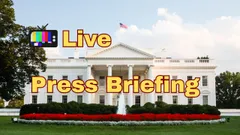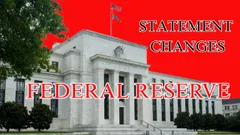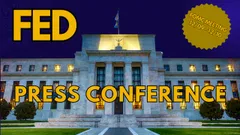AInvest Newsletter
Daily stocks & crypto headlines, free to your inbox
On Monday, the yield on the 10-year US Treasury bonds surpassed 5%, reaching a 16-year high. Despite a significant subsequent drop, this milestone underscores an unsettling reality: the US Treasury bond market seems to be entering a new era and eroding the market confidence in any predictions of peak yields.

The recent bond market turmoil over the past two months has been primarily driven by long-term bonds, which are more susceptible to the impact of rising interest rates and strong economic growth. In September, US consumer prices rose rapidly for the second consecutive month, and economic data continued to indicate robust economic activity.
Furthermore, bond investors are being asked to purchase increasingly more Treasury securities and bonds as the US budget deficit is increasing. Meanwhile, the Federal Reserve has not been replacing all the Treasury bonds on its balance sheet when they mature.
According to estimates by traders, the outstanding debt will increase by $1.5 trillion to reach $2 trillion by 2024, up from approximately $1 trillion this year. In August, the US Treasury increased quarterly bond sales for the first time in two and a half years and indicated the possibility of further increases in the coming quarters. The financing plan for November through January will be announced on November 1st.
Changing market composition is another new threat to the US Treasury bonds. Foreign governments, including China, have been reducing their holdings of US Treasury bonds, while hedge funds, mutual funds, insurance companies, and pension funds are stepping in.
The participation of these investors leads to a resurgence of term premium in bond pricing, which means investors are seeking higher yields to compensate for the risk of holding longer-term bonds.
A 5% yield on the 10-year Treasury may already seem too high for some investors, as it poses a threat to economic conditions, and demand for safe-haven assets may resurface. However, Gennadiy Goldberg and Molly McGown, strategists at TD Securities, wrote in a recent report:
While levels look attractive in the near term, investors are likely to continue waiting for catalysts (such as geopolitical risks or slowing data) rather than catching the falling knife amid technical weakness, and this could keep rate volatility extremely high in the near-term.
Ven Ram, a macro strategist, noted, After more than a year of being inverted, some of the key segments of the Treasury curve are about to revert to zero. That is usually taken as an imminent sign that the economy is about to contract or even entered a recession — but that isn't the case this time around. It has more to do with a higher neutral rate and rising real-risk premiums.
In the long run, interest rates may be pushed higher than recent historical levels. A recent report suggests that the combined impact of persistently high government borrowing, increased spending to combat climate change, and faster economic growth could push the nominal yield on the 10-year US Treasury bonds to around 6%.
Higher borrowing costs could eventually become a constraint on the US economy, aiding the Federal Reserve in its battle against inflation. In recent weeks, the average rate on 30-year fixed-rate mortgages has surged to around 8%, while the cost of servicing credit card bills, student loans, and other debts has risen with the increase in market interest rates.
Federal Reserve Chair Jerome Powell and some of his colleagues have indicated that the continued rise in yields could marginally ease the pressure for monetary policy tightening, as some economists point out that if yields continue to rise in the near term, it would be equivalent to the Fed tightening monetary policy by approximately 50 basis points.
Expert analysis on U.S. markets and macro trends, delivering clear perspectives behind major market moves.

Dec.12 2025

Dec.11 2025

Dec.10 2025

Dec.10 2025

Dec.08 2025
Daily stocks & crypto headlines, free to your inbox
Comments
No comments yet